
Written in 2006
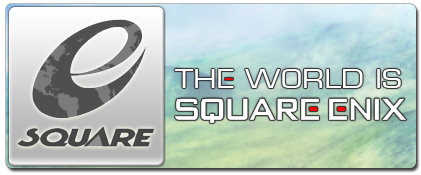 Suikoden, Phantasy Star, Grandia, Lunar... there are many great RPG series not created or published by either Square, Enix or Square Enix. Yet, even people who do not have too much sympathies for this giant cannot deny the fact that Enix virtually created the RPG genre itself and Square the by far most popular series. This company offers many great RPGs that come up with almost every taste. Innovative games such as Chrono Trigger, Sa Ga Frontier or Code Age Commanders, epic storys like seen in Final Fantasy VI, VII and Terranigma. And sometimes, they just act as a publisher who gives financial and technical support as seen 2005 when they published Grandia III
Suikoden, Phantasy Star, Grandia, Lunar... there are many great RPG series not created or published by either Square, Enix or Square Enix. Yet, even people who do not have too much sympathies for this giant cannot deny the fact that Enix virtually created the RPG genre itself and Square the by far most popular series. This company offers many great RPGs that come up with almost every taste. Innovative games such as Chrono Trigger, Sa Ga Frontier or Code Age Commanders, epic storys like seen in Final Fantasy VI, VII and Terranigma. And sometimes, they just act as a publisher who gives financial and technical support as seen 2005 when they published Grandia III
But how did it all start? And how did it happen that the two most important RPG companies joined forces in 2003? I hope I can give you some facts and anecdotes in this article.
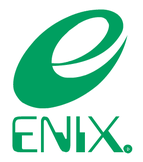 Let's begin with the company that inspired almost every japanese RPG developer later on, Enix. Enix was founded in 1975 as Eidansha Boshu Service center - the well-known name "Enix" was introduced in 1982. Two people were working at Enix back then, Yuji Horii and Koichi Nakamura. In those days, the RPG genre was completely ruled by american developers. Ultima and Wizardry did already exist, but they were quite simple dungeon crawlers with not so impressive storylines. Enix' vision was to create a game that combines classical RPG aspects with an impressive storyline, likeable character- and enemy design and a memorable yet orchestral soundtrack. Obviously, this was just what the japanese market demanded - Dragon Quest was incredibly successful, selling over one million units. Such success soon draws copycats near and so it turned out to be that one of the final projects of another (almost bankrupt) developer was also planned to be a RPG. But more about this later on.
Let's begin with the company that inspired almost every japanese RPG developer later on, Enix. Enix was founded in 1975 as Eidansha Boshu Service center - the well-known name "Enix" was introduced in 1982. Two people were working at Enix back then, Yuji Horii and Koichi Nakamura. In those days, the RPG genre was completely ruled by american developers. Ultima and Wizardry did already exist, but they were quite simple dungeon crawlers with not so impressive storylines. Enix' vision was to create a game that combines classical RPG aspects with an impressive storyline, likeable character- and enemy design and a memorable yet orchestral soundtrack. Obviously, this was just what the japanese market demanded - Dragon Quest was incredibly successful, selling over one million units. Such success soon draws copycats near and so it turned out to be that one of the final projects of another (almost bankrupt) developer was also planned to be a RPG. But more about this later on.
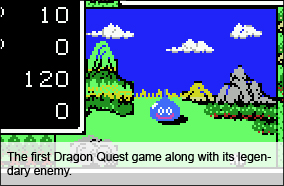 After this success, it was clear that many Dragon Quest titles had to follow. Dragon Quest II, III and IV were released on Nintendo's highly successful NES console from 1987 to 1990, V and VI on the SNES 1992 and 1995, VII on the PlayStation in 2000 and the newest installment was released on the PS2 in 2005. This covers only the main games, several spinoffs have already been released on various consoles. Other games developed by Enix themselves are the "7th saga" games, RPGs less focused on story than Dragon Quest. Enix also teamed up with some very promising small teams who would present the world some of the best RPGs around that even rivaled the quality of Enix' Dragon Quest series. First of all, Quintet should be named - they are behind the highly appreciated "Soul Blazer" trilogy which consists of "Soul Blazer", "Illusion of Gaia" and "Terranigma". The Soul Blazer trilogy is a series of action RPGs which basically don't have anything to do with each other story-wise. Yet, they are entwined since they all cover the recreation of the world by divine forces. Although Soul Blazer itself is quite the hack-and-slay type of game, the series increases in quality with every game reaching its peak with the glorious Terranigma, a game whose story is still one of the best in the genre. Sadly enough, you don't hear much of Quintet nowadays, freaking enough to know that the company's status is even uncertain at the moment. Another first-class partner of Enix was tri-Ace, the creator of the Star Ocean series and Valkyrie Profile (you can read more at the tri-Ace section here on RPG-O-Mania).
After this success, it was clear that many Dragon Quest titles had to follow. Dragon Quest II, III and IV were released on Nintendo's highly successful NES console from 1987 to 1990, V and VI on the SNES 1992 and 1995, VII on the PlayStation in 2000 and the newest installment was released on the PS2 in 2005. This covers only the main games, several spinoffs have already been released on various consoles. Other games developed by Enix themselves are the "7th saga" games, RPGs less focused on story than Dragon Quest. Enix also teamed up with some very promising small teams who would present the world some of the best RPGs around that even rivaled the quality of Enix' Dragon Quest series. First of all, Quintet should be named - they are behind the highly appreciated "Soul Blazer" trilogy which consists of "Soul Blazer", "Illusion of Gaia" and "Terranigma". The Soul Blazer trilogy is a series of action RPGs which basically don't have anything to do with each other story-wise. Yet, they are entwined since they all cover the recreation of the world by divine forces. Although Soul Blazer itself is quite the hack-and-slay type of game, the series increases in quality with every game reaching its peak with the glorious Terranigma, a game whose story is still one of the best in the genre. Sadly enough, you don't hear much of Quintet nowadays, freaking enough to know that the company's status is even uncertain at the moment. Another first-class partner of Enix was tri-Ace, the creator of the Star Ocean series and Valkyrie Profile (you can read more at the tri-Ace section here on RPG-O-Mania).
Even with Dragon Quest VII being one of the all-time most successful video games in Japan and strong allies and high quality products, Enix got in trouble after the US-release of Dragon Quest VII. The game was unbelievably delayed during its development and was released way too late in Northern America. In 2002 tri-Ace began developing Star Ocean 3, an epic RPG with lots of voice overs, facial expressions and overall very detailled graphics. Developing such a game costs money, more many than any game released before by Enix. Even if Enix was a healthy company back then, the new generation of consoles requires more and more amount of money to develop games.
 Square was founded in 1983 by Masafumi Miyamoto and, as some anecdotes say, the name "Square" is based on the golf passion of Mr. Miyamoto. Like many companies of that time, Square developed for the Nintendo Entertainment System and MSX computer. Their games, however, were rather mediocre. Their vertical story shooter from 1985 "King's Knight" is known to be horrible . The games of 1987, not horrible but not outstanding, "3D World Runner" and "3D World Runner 2" did not sell well which put Square in a heavy crisis where the fate of the company was already determined. Before they disappear from the world's surface, Square decided to create one final game, highly inspired by the famous Dragon Quest game released a year before. As the J-RPG-genre was budding in Japan, Square, under the direction of Hironobu Sakaguchi, released their "last game" - their Final Fantasy. But, things never happen the way you expect them to do so. Final Fantasy was heavily successful, so successful that there was even a northern american release. With Final Fantasy II and III, Square stabilized their reputation as creators of good RPGs. Square was now a successful company which created Final Fantasy sequels and derivates for the new Game Boy and Super NES systems. When the 1990s came, Square started to diversify their RPG portfolio. In 1991, along with Final Fantasy IV for the SNES, they etablished the experimental FF-spin-off "Romancing SaGa", a series that still exists nowadays. Other than that, in the following years various new series and games appeared. The action RPG "Seiken Densetsu" in 1991, the beginner's RPG "Final Fantasy Mystic Quest" in 1992, Chrono Trigger and Front Mission in 1995, Bahamut Lagoon and Super Mario RPG in 1996... the success of this company was incredible. It was so incredible that even Capcom sold the US-license of their game "Breath of Fire" to Squaresoft in 1993 so that the new RPG does have a lable on it that sells it better in the stores. Yet, 1997 should not only change the RPG genre itself but Square's future game portfolio as well.
Square was founded in 1983 by Masafumi Miyamoto and, as some anecdotes say, the name "Square" is based on the golf passion of Mr. Miyamoto. Like many companies of that time, Square developed for the Nintendo Entertainment System and MSX computer. Their games, however, were rather mediocre. Their vertical story shooter from 1985 "King's Knight" is known to be horrible . The games of 1987, not horrible but not outstanding, "3D World Runner" and "3D World Runner 2" did not sell well which put Square in a heavy crisis where the fate of the company was already determined. Before they disappear from the world's surface, Square decided to create one final game, highly inspired by the famous Dragon Quest game released a year before. As the J-RPG-genre was budding in Japan, Square, under the direction of Hironobu Sakaguchi, released their "last game" - their Final Fantasy. But, things never happen the way you expect them to do so. Final Fantasy was heavily successful, so successful that there was even a northern american release. With Final Fantasy II and III, Square stabilized their reputation as creators of good RPGs. Square was now a successful company which created Final Fantasy sequels and derivates for the new Game Boy and Super NES systems. When the 1990s came, Square started to diversify their RPG portfolio. In 1991, along with Final Fantasy IV for the SNES, they etablished the experimental FF-spin-off "Romancing SaGa", a series that still exists nowadays. Other than that, in the following years various new series and games appeared. The action RPG "Seiken Densetsu" in 1991, the beginner's RPG "Final Fantasy Mystic Quest" in 1992, Chrono Trigger and Front Mission in 1995, Bahamut Lagoon and Super Mario RPG in 1996... the success of this company was incredible. It was so incredible that even Capcom sold the US-license of their game "Breath of Fire" to Squaresoft in 1993 so that the new RPG does have a lable on it that sells it better in the stores. Yet, 1997 should not only change the RPG genre itself but Square's future game portfolio as well.
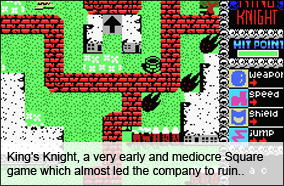 1997 started as many years did before. Square released SaGa Frontier, another chapter of the SaGa series and another Final Fantasy sidekick called "Chocobo Dungeon". But, as it was already eagerly awaited by many gamers and the gaming magazines, Final Fantasy VII should also hit the stores in that year. Although FFVII is heavily antiquated right now and much less ageless than its direct predecessor, it really did change the world of RPGs. The presentation of FFVII was quite new. Although there were other RPGs with lots of video sequences already out there in Japan (Lunar on the Sega Saturn), with its tons of cinematic sequences that brushed up the story, characters that were developed from a stylistic point of view and a modern cyberpunk setting, Final Fantasy VII turned out to be the RPG the market wanted. Even more, it made the genre attractive to people who didn't have any interest in RPGs before. This game was so successful that it even changed all of the following Final Fantasies - the style of how the story is presented in current Final Fantaies is still inspired by Final Fantasy VII.
1997 started as many years did before. Square released SaGa Frontier, another chapter of the SaGa series and another Final Fantasy sidekick called "Chocobo Dungeon". But, as it was already eagerly awaited by many gamers and the gaming magazines, Final Fantasy VII should also hit the stores in that year. Although FFVII is heavily antiquated right now and much less ageless than its direct predecessor, it really did change the world of RPGs. The presentation of FFVII was quite new. Although there were other RPGs with lots of video sequences already out there in Japan (Lunar on the Sega Saturn), with its tons of cinematic sequences that brushed up the story, characters that were developed from a stylistic point of view and a modern cyberpunk setting, Final Fantasy VII turned out to be the RPG the market wanted. Even more, it made the genre attractive to people who didn't have any interest in RPGs before. This game was so successful that it even changed all of the following Final Fantasies - the style of how the story is presented in current Final Fantaies is still inspired by Final Fantasy VII.
Aside of this RPG revolution, Square also started to develop more non-RPG games from this year on. In 1997, they published Einhänder, a horizontal shoot-em-up game as well as the fighting games Bushido Blade and Tobal No.1. They continued this new style in the following years. Aside of RPGs, Square produced lots of other games as well. Great RPGs were developed by Square in those years. Xenogears, Parasite Eve, Final Fantasy Tactics in 1998; Final Fantasy VIII and Chrono Cross in 1999 as well as Final Fantasy IX and Vagrant Story in 2000. But also the games aside of RPGs were doing quite well. Ehrgeiz (1998) and Chocobo Racing (1999) weren't the best of the corresponding genre, but still decent games.
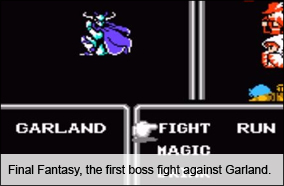 When the console generation changed from the 32/64-bit generation to the 128-bit generation, Square caused themselves some problems. First of all, their non-RPG PS2 games weren't really good. Driving Emotion Type-S (what an awkward title... it means that you drive on the "Emotion Engine", the PS2 CPU with a Square racing game, hence "Type-S") was a nice-looking racing game with horrible controls. "The Bouncer" was a street fighting game in the tradition of old games such as Streets of Rage, but failed to reach this quality. The movie they did in 2001, "Final Fantasy: The Spirits Within" was pretty intelligent and beautiful, but didn't touch the heart of the people who went to the cinemas. The financial situation was quite bad back then, and even some of the scheduled RPG projects died back in those days (Chrono Shock, Xenosaga which later on was published by Namco). The next big RPG, Final Fantasy X had to be a success, or else the company would have faced dire problems. But well, Final Fantasy is Final Fantasy - it sold well and saved Square once more. Still, the company was not as healthy as it were a few years ago. In 2002, Kingdom Hearts sold pretty well, but Unlimited Saga was a heavily polarizing game without so much commercial success.
When the console generation changed from the 32/64-bit generation to the 128-bit generation, Square caused themselves some problems. First of all, their non-RPG PS2 games weren't really good. Driving Emotion Type-S (what an awkward title... it means that you drive on the "Emotion Engine", the PS2 CPU with a Square racing game, hence "Type-S") was a nice-looking racing game with horrible controls. "The Bouncer" was a street fighting game in the tradition of old games such as Streets of Rage, but failed to reach this quality. The movie they did in 2001, "Final Fantasy: The Spirits Within" was pretty intelligent and beautiful, but didn't touch the heart of the people who went to the cinemas. The financial situation was quite bad back then, and even some of the scheduled RPG projects died back in those days (Chrono Shock, Xenosaga which later on was published by Namco). The next big RPG, Final Fantasy X had to be a success, or else the company would have faced dire problems. But well, Final Fantasy is Final Fantasy - it sold well and saved Square once more. Still, the company was not as healthy as it were a few years ago. In 2002, Kingdom Hearts sold pretty well, but Unlimited Saga was a heavily polarizing game without so much commercial success.
 So 2003 approached and both big RPG developers had to face the future of RPG development. Enix had to finance a big RPG project developed by tri-Ace (not to forget the plans of doing Dragon Quest VIII), and Square set up an expensive online community while developing some new games for the Nintendo GBA, the Sony PlayStation 2 and even the Game Cube. On top of that, Game development got more and more expensive. It seemed for both companies the best solution to merge. And so they did. In 2003, Squaresoft Co, Ltd. and Enix Corporation became one...
So 2003 approached and both big RPG developers had to face the future of RPG development. Enix had to finance a big RPG project developed by tri-Ace (not to forget the plans of doing Dragon Quest VIII), and Square set up an expensive online community while developing some new games for the Nintendo GBA, the Sony PlayStation 2 and even the Game Cube. On top of that, Game development got more and more expensive. It seemed for both companies the best solution to merge. And so they did. In 2003, Squaresoft Co, Ltd. and Enix Corporation became one...
Officially, Enix took over Square back then. All the shareholders of Square got paid to exchange their Square shares for Enix shares. The management, however, was moved from Square to Square Enix. So the company that took over another was now controlled by those they took over. Quite awkward businessman-stuff, if you ask me.
 Anyway, now both of the big RPG makers were able to create their games under the same flag. This was a shocking moment for many fans since there always was quite some rivalry going on between Square fans and Enix fans. Now they were fans of the same company. Some gamers now screamed that the games don't have the same quality as before the merger, and some even quit their hobby because they thought everything is lost. But was everything really lost? The portfolio of the new founded company was quite impressive: Star Ocean: Till The End of Time, Final Fantasy XI online, Dragon Quest VIII, Kingdom Hearts: Chain of Memories, Front Mission 4, Radiata Stories, Romacing SaGa... all of them were great RPGs created between 2003 and 2005. Now the company was even powerful enough to delay the release date of Final Fantasy XII so that they can do more finishing work without fearing bankruptcy if the game isn't released as soon as possible. They even were powerful enough now to support their former rival Game Arts while they were developing Grandia III, which was also released as a "Square Enix" game in 2006.
Anyway, now both of the big RPG makers were able to create their games under the same flag. This was a shocking moment for many fans since there always was quite some rivalry going on between Square fans and Enix fans. Now they were fans of the same company. Some gamers now screamed that the games don't have the same quality as before the merger, and some even quit their hobby because they thought everything is lost. But was everything really lost? The portfolio of the new founded company was quite impressive: Star Ocean: Till The End of Time, Final Fantasy XI online, Dragon Quest VIII, Kingdom Hearts: Chain of Memories, Front Mission 4, Radiata Stories, Romacing SaGa... all of them were great RPGs created between 2003 and 2005. Now the company was even powerful enough to delay the release date of Final Fantasy XII so that they can do more finishing work without fearing bankruptcy if the game isn't released as soon as possible. They even were powerful enough now to support their former rival Game Arts while they were developing Grandia III, which was also released as a "Square Enix" game in 2006.
This article was written on May 28th, 2006. On this day, Square-Enix's plans for the future looked promising. Children of Mana (DS), Final Fantasy III (DS) and Final Fantasy VII: Crisis core (PSP) seemed to be pretty good handheld-RPGs, where one was more focused on gameplay and the other two on story. The support of home consoles looked also very promising - Final Fantasy XII (PS2), Final Fantasy XIII (PS3), Final Fantasy: Crystal Chronicles 2 (Wii), Dragon Quest Yangus (PS2), Dragon Quest (Wii), Dawn of Mana (PS2), Valkyrie Profile 2: Silmeria (PS2)... there were lots of possibly great games announced. However, not everything went as perfect as Square Enix could have wished for: Game Arts was bought by a big online game publisher, stalling the new relationship between Square-Enix and Game Arts. Microsoft was able to make a contract with tri-Ace so that they'll create a RPG exclusively for the XBox 360 console without working together with Square-Enix. Did that mean that the long partnership between Square-Enix and tri-Ace ended? That was quite uncertain in late May 2006. How does a very famous Square action RPG say? "Time flows like a river, but history repeats." Will this work for Square Enix too?
Although I did this already at the copyright comments section, I just wanted to repeat this: All images (and especially the logos!) on this page are property of their respective owners. Consulting Moby Games helped me a lot to back up everything I wrote down.